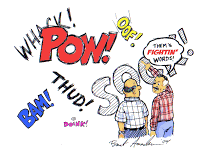
I signed up to receive daily writing prompts from Lisa Romeo, one per day for the month of October as a way to keep myself honest and make sure that, even as I work on selling my manuscript, I am continuing to write every day.
Tag Archive for: mindfulness

This summer in Hawaii I made a promise to myself to get up and go to the yoga classes offered on the beach every morning. Bubba hung out with the girls, playing in the sand, and jumping over waves while, 50 yards away, a group of 20 or so of us stood on hotel towels in the soft, dry sand and followed a yoga instructor.

“When a book and a head collide and there is a hollow sound, is it always from the book?” Georg Christoph Lichtenberg

This week’s positive intention class was focused on identifying and honoring the little victim within. We all have one (mine is a little green gremlin with warts and pointed ears who is so ugly he is cute) and their job is to continually warn us of all the dangerous things out there that we need to watch out for. He doesn’t forget anything and has this way of linking every negative experience to a few major traumatic events in the past and worrying that if we dare to set one big toe out the door again, we will certainly be run over and squashed flat.
I’ve learned some new ‘exercises’ in my positive intentions class and am diligently attempting them daily. Some are easier than others and I find that there are two that consistently find me struggling to focus and complete them.

Quiet morning. Girls both at school and Bubba’s off to California. Dishes done. Laundry put away. Email answered. Dog walked. It occurs to me how long it has been since I sat in a quiet room and meditated, so I head upstairs, settle down on a cushion, cross my legs and begin breathing.

I heard someone say once that the reason we get defensive when someone insults us is because there is a part of us that believes in the veracity of the insult. Think about it. Don’t we usually come back with, “No, I’m not!” or some such defense or proof that we are not, indeed, guilty of whatever our accuser has said we are guilty of? I know I do that. Once someone says something about me (unless it’s my kids – I long ago figured out how to let go the slings and arrows of being told I’m the meanest mother there is), I am immediately driven to prove them wrong. I see my girls doing it with each other, too.
“She called me a butthead!” Lola shrieks.
“Well, are you one?” I ask.
She is offended. Until she realizes that her bottom is most definitely not on her head and giggles. I remind her that just because Eve is older than her and flung the insult with a great deal of passion, does not mean that Lola is, indeed, a butthead. And if she were one, is that something under her control or not? If not, then it isn’t much of an insult, is it? That’s like calling the dog a dog. No matter how loudly or indignantly you say it, it’s just the truth and not derogatory. It isn’t his fault he’s a dog. He just is.
Like most of my parenting tactics, however, it seems that I must repeat this speech for both girls somewhere between half a million and two billion times before they actually either recall it on their own or think long enough to apply its actual meaning to this particular situation.
Why is name-calling so effective? Who first discovered that it had the power to stop another human in their tracks? Name-calling is like the sound bite of relationships – rarely accurate but effective at grabbing attention. I know that when my girls descend into “jerk” and “idiot” they have simply stopped attempting to solve whatever misunderstanding they are having and are simply trying to get the point across that they are MAD. I’m pretty sure the names are designed to hurt feelings, too, although neither of my girls would admit that they purposely wanted to hurt her sister. When we all sit down later to discuss the issue, sometimes I ask them for a character sketch of a jerk or an idiot or a butthead and, once we have all of the traits down on paper, it turns out that neither of them fits the description. So why is it so much easier to label other people with mean names than it is to say we are simply angry or frustrated or hurt?
I wonder if it is because calling someone else a name puts all of the blame outside ourselves. If we admit that we are upset, not only does that make us seem vulnerable, it somehow invites personal responsibility into the mix. If you are a jerk, however, it must be all your fault and I am teflon-girl. Certainly when I am accused of being a jerk or an idiot I have a moment, however fleeting, of panic. Is it all my fault? Did I make a huge mistake? What have I done?
![]()
Thanks for visiting my site. I’m driven by the exploration of human connection and how we can better reconnect to ourselves, our families, and our communities. Aside from my books, I hope you’ll check out my blog, and some of my other writing to find more perspectives and tools.


